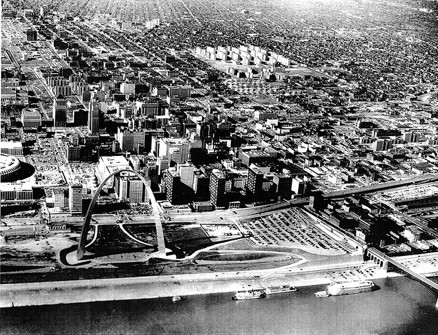
Saint Louis skyline with Eero Saarinen's Gateway Arch in the foreground and Minoru Yamasaki's Pruitt-Igoe housing development in the back right. Image from "The Pruitt-Igoe Myth" documentary.
Notable attention has turned to what many consider the golden age of modern St. Louis—the 1950s—when the city reached its highest population and garnered international attention for its architectural contributions. However, within this renewed interest in mid-century St. Louis is also an attempt to detach the persisting nostalgia for the past from the actual social, economic, and political circumstances that were at play.
At its best, mid-century St. Louis produced celebrated icons—Minoru Yamasaki’s 1956 Lambert air terminal and Eero Saarinen’s 1965 Gateway Arch. During its less proud moments, modern architecture failed to adapt to the unique demands of our city, exposing the shortcomings of its “universal” ideals. In St. Louis and beyond, discussions on the failures of modern architecture often center on Yamasaki’s Pruitt-Igoe housing development. Completed in 1956, the monumental public housing project was razed only twenty years later. Its demolition was felt around the world, and in 1977, historian Charles Jencks famously claimed that the destruction of Pruitt-Igoe marked “the day Modern architecture died.”
When constructed in the mid-1950s, Pruitt-Igoe represented the hopeful vision that the city of St. Louis would maintain its steady population growth. As government officials and other stakeholders saw it, increased populations meant increased real-estate values. As a result, low-income housing was tasked with cleaning up the sprawling slums through systematically concentrating people in modern high-rise structures. At its peak, Pruitt-Igoe housed roughly 15,000 people in thirty-three eleven-story buildings. However, the rapid onset of white-flight and suburbanization revealed the many flaws in this plan. Pruitt-Igoe failed for a number of reasons, including Yamasaki’s architectural design, inadequate maintenance of the building, and decreasing tax dollars for public housing. Released in February of this year, a new documentary titled The Pruitt-Igoe Myth paints a much more complicated picture of Pruitt-Igoe than has been told in the past, sharing first-hand accounts of former tenants that help to humanize the housing development.
Pushing the narrative beyond the trials of modernism, artist Juan William Chávez explores creative possibilities for the still unoccupied land where Pruitt-Igoe once stood. As I introduced in my first post, Chávez is a pivotal force in the St. Louis art scene, founding Boots Contemporary Art Space on Cherokee Street in 2006 and winning the Great Rivers Biennial at the Contemporary Art Museum St. Louis in 2008. Just last year, Chávez closed Boots, moving beyond the gallery walls to focus his practice on community engagement. In 2010, Chávez curated Urban Expression: Theaster Gates for the Pulitzer Foundation for the Arts. His cultural activism has recently earned a great deal of attention and this year Chávez was awarded the Missouri Arts Award for Individual Artist and received the prestigious Art Matters Grant.
For over a year, Chávez has visited the land where the Pruitt-Igoe buildings once stood time and again, intrigued by how so many different sectors of society – local residents, government officials, architects, urban planners, social workers, and artists – have symbolically claimed the story of Pruitt-Igoe, while the land persists in a state of abandonment. Only blocks away from the city-center, the lot has now transformed into a fifty-acre urban forest. Chávez explains, “I entered this forest expecting the remains of a community but was surprised to see the beginning of another.” Upon noticing the number of bees that have claimed the forest as their own, Chávez came to think about not only the sculptural similarities between unadorned beehives and the Pruitt-Igoe towers, but also about the metaphorical potential of bee communities. Like St. Louis’s population, honeybees are on the decline. However, in contrast to the unnatural living conditions in Pruitt-Igoe, bees provide a model for community organization.
Over the past few months Chávez has formalized his vision, calling it the Pruitt-Igoe Bee Sanctuary. In a recent interview with curator Marie Heilich, Chávez explained, “If it were a bee sanctuary that offered educational programs and a memorial park filled with wild plants — a destination for people to go — that would stimulate the environment far more than a strip mall or an apartment complex. A unique plan like that would get far more attention and could inspire the city more than anything else.” Along with the public proposal, Chávez has developed a comprehensive website and is archiving stories from those who lived and worked around Pruitt-Igoe. He has also developed and exhibited a series of photographs and a Super-8 film taken in the forest, bridging his artistic practice with his community engagement. Chávez’s proposal for the Pruitt-Igoe Bee Sanctuary imagines an antidote to the monumentality of Pruitt-Igoe. He suggests that rather than paving over St. Louis’s scarred past with ambitious new developments, we could create a public place for reflection and education, a living memorial that would constructively acknowledge the city’s successes and failures.
https://vimeo.com/19214162
Serendipitously, Chávez initiated his Pruitt-Igoe research just months before The Pruitt-Igoe Myth documentary premiered, demonstrating an indisputable connection between our current moment and mid-century St. Louis. There are a number of reasons why mid-century St. Louis is currently captivating the public imagination. Perhaps — as an architect friend of mine suggested — we are recognizing the value of buildings constructed in the 1950s-1960s because they now meet the criteria for historical status (the National Register of Historic Places generally requires that a building is at least fifty years old to be considered a historical landmark). Or maybe the cultural swell of the past decade readily connects with an earlier moment, when architects like Saarinen and Yamasaki were also imagining the city’s international potential. I can’t help but thinking that in the 1950s-1970s, many similarly felt that the city was on the brink – that they too could redirect the course of its history.
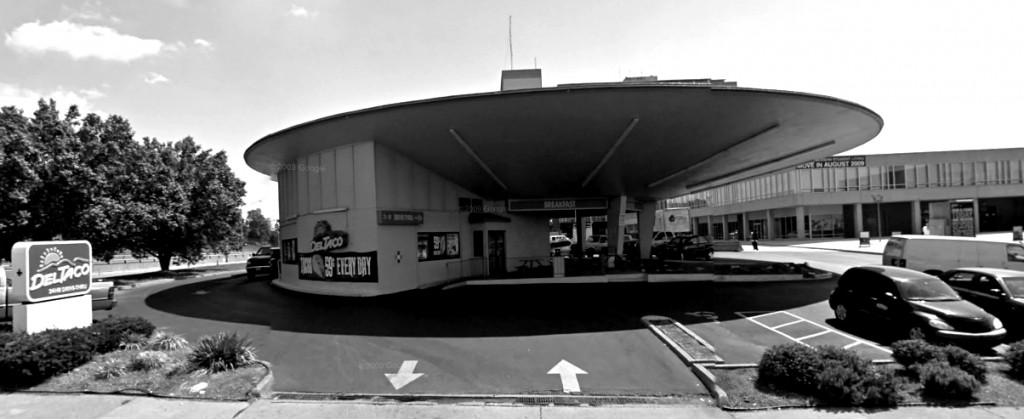
In the past month, many have protested the possible demolition of the “Flying Saucer,” a 1967 Phillips 66 gas station that most recently housed a Del Taco restaurant. Following a successful demonstration that prevented the “Flying Saucer’s” demolition, attention has now turned to squashing CVS’s plan to demolish a unique mid-century AAA building on Lindell Boulevard. Courtesy of nextSTL.
The triumphs and failures of modernism have indelibly shaped the St. Louis skyline, making the city an international example of post-war urban transformation. From London-based artist Ian Monroe’s exploration of Yamasaki’s Lambert air terminal in Currents:105 at the Saint Louis Art Museum, to The Pruitt-Igoe Myth documentary which, in a few short months, has taken US and Canadian cities by storm, the story of St. Louis modernism resounds beyond our city limits.
During a recent conversation with Chávez, he recounted an experience he frequently had when hosting out-of-town artists at Boots. Oftentimes, he explained, visiting artists asked him to show them where Pruitt-Igoe once stood. He mistakenly told them that the lot had since been developed and was later embarrassed by this error. Many St. Louisans have shared Juan’s experience; I also did not know the location of Pruitt-Igoe until only recently. Whether bees are formally welcomed to reside in St. Louis’s lower north side or the land remains an urban forest, Chávez encourages us to locate and take ownership of the city’s history, imagining creative possibilities for its future.

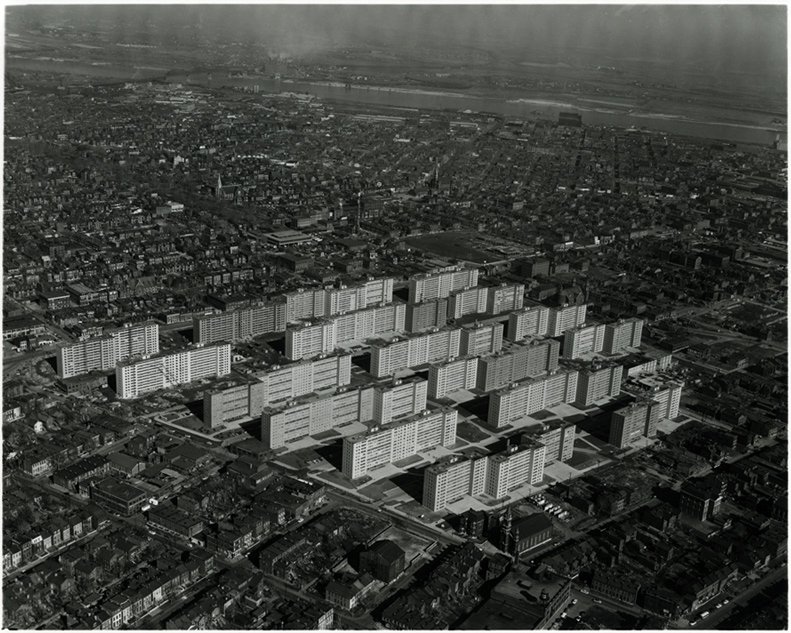
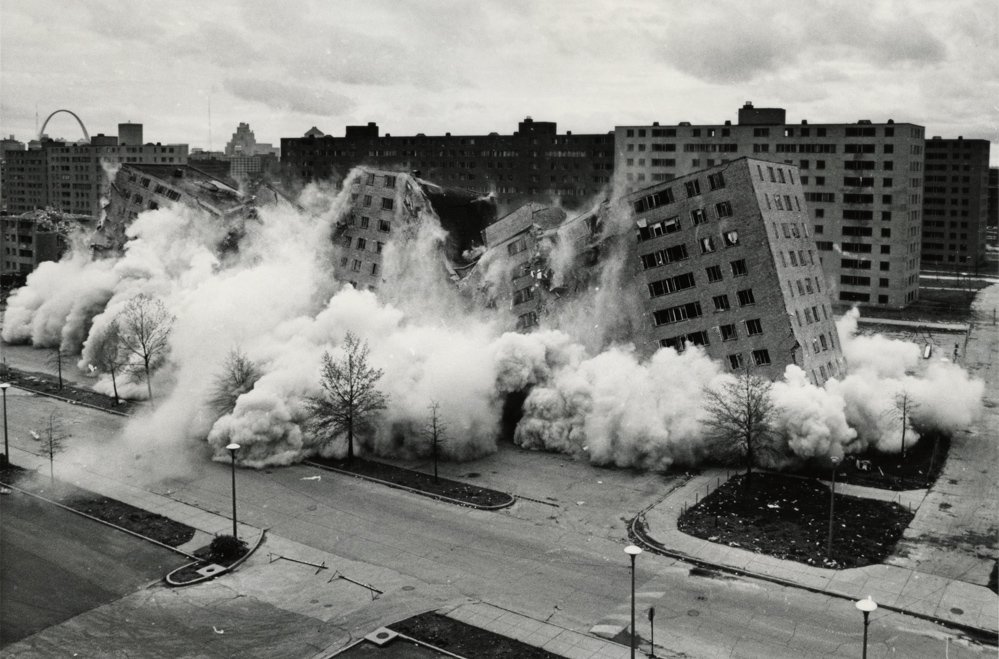
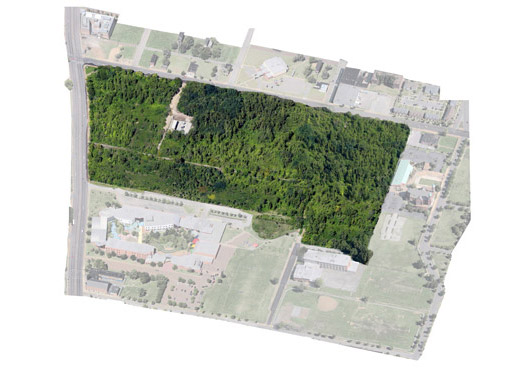

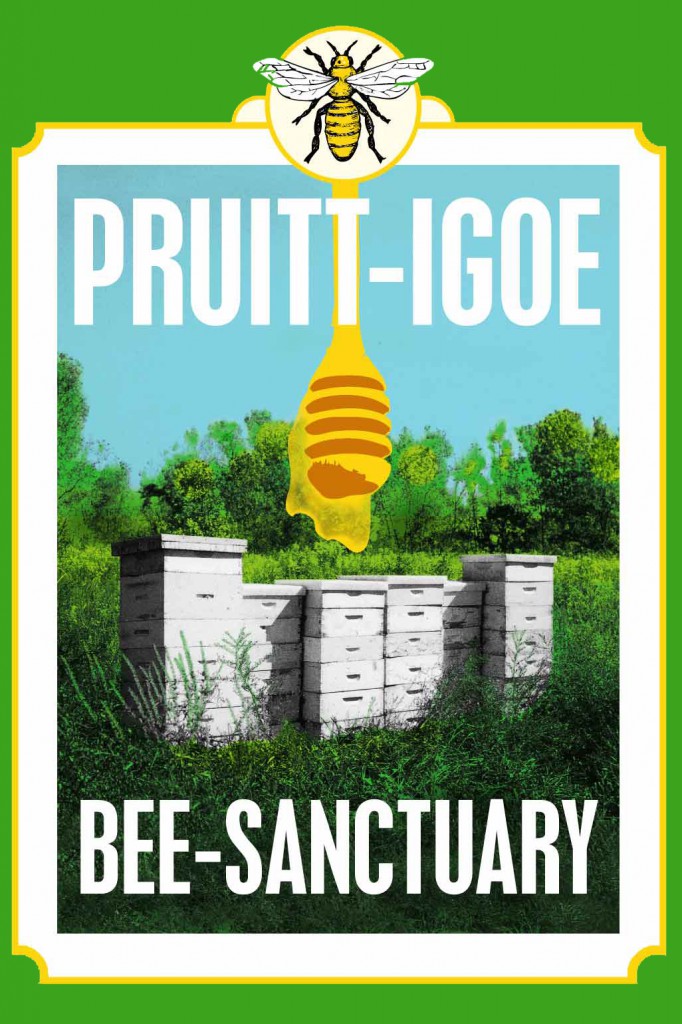



Pingback: Creative Rebuild: Theaster Gates in Hyde Park, St. Louis | Art21 Blog